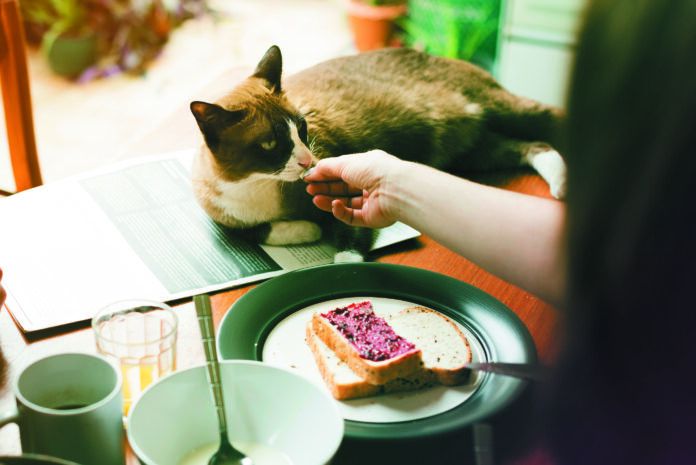Your cat’s skin often seems to irritate her — she either scratches or licks excessively. Or she somewhat frequently experiences digestive issues in the form of vomiting or diarrhea. Is it a food allergy?
Probably not. Food allergies are quite uncommon in cats. If she has any allergies at all, they’re more likely to be to allergens in the air, like pollen, dust mites, mold, or fleas. But how can you tell for sure that it’s not a food that’s causing her untoward symptoms?
Not by a blood test. A blood test may show on a lab report that a cat has an allergy to a specific food or a specific protein in a food, but that often doesn’t translate to an actual sensitivity to that food item in real life.
The only way to accurately test for a food allergy is with an elimination diet trial, meaning the diet eliminates potential allergy-causing ingredients to see if that improves the cat’s symptoms. It’s not easy. For one thing, many veterinarians will recommend such a trial for at least 2 to 3 months for a cat with skin issues and perhaps a month or more for a feline who has digestive problems; it can’t go fast. Furthermore, it’s best to go with a diet prescribed by the veterinarian rather than choosing one off the shelf to be more assured that the food contains exactly the ingredients it is purported to contain.
The vet may choose one of three types of diets. The first is called a novel ingredient diet. It will contain ingredients your cat has never eaten before. You need to be able to give a complete diet history to your vet.
Of course, not everybody is able to do this. If you didn’t adopt your cat as a very young kitten, you won’t be able to say everything your pet has ever ingested. Even if you do know everything she has eaten but can’t identify all the ingredients in each food, your diet history will be incomplete.
In such cases, your vet might go with what is known as a hydrolyzed diet. A hydrolyzed diet’s proteins are broken down to the point that they can’t be recognized by the immune system. That’s key. It’s proteins in foods that trigger a cat’s immune system to see the food as a foreign “invader” and start fighting it, which is what causes the symptoms. For a cat with skin disease, most veterinary dermatologists will go with an extensively hydrolyzed diet. That breaks the proteins down even further.
Another option is an elemental diet. It’s made from amino acids — the building blocks of protein — rather than whole proteins. There’s also careful consideration with those diets regarding the source of carbohydrates (which may also contain some protein), along with essential nutrients.
It’s not just what to feed
Changing your cat’s diet to see if a food ingredient might really be causing her symptoms is only half the battle. The other challenge is making sure she eats nothing outside of that diet. Nothing. The Clinical Nutrition Service at the Tufts Cummings School has prepared a checklist of things not to feed. Here is that checklist in abbreviated form.
Do not feed:
- Commercial pet treats. (Best not even to have them in the house.)
- All people food. (Even something as seemingly innocuous as marshmallows contains gelatin, which contains protein.)
- Dietary supplements (unless they have been cleared with the vet, who can confirm whether they contain any potentially offending substances).
- Pet toothpaste. (Brushing without toothpaste will continue to help maintain dental hygiene.)
- Flavored medications, including flavored topicals.
- Edible pill pockets or other “wraps” you normally use to get your cat to take her medicine. (Your vet might be able to suggest “safe” alternatives.)
Additionally, make sure that your cat cannot get to the food of any other pet in the household; that small children don’t eat near the cat (they can drop food that your pet may then nibble on); and that all houseguests understand that the cat cannot have any of their food or other treats.
With everything in place for what a cat should and should not eat, you will have the best chance of learning whether your pet does indeed seem to have a food allergy. Any less vigilance on your part, and you will not get a real answer.





And what if the cay just won’t eat the prescribed food?
This wasn’t an allergy-once had a cat that chewed on tea bags, wooden furniture legs, soiled underwear, (ew) raw potatoes, fixed it by giving him lamb’s ears (dog chew toys)